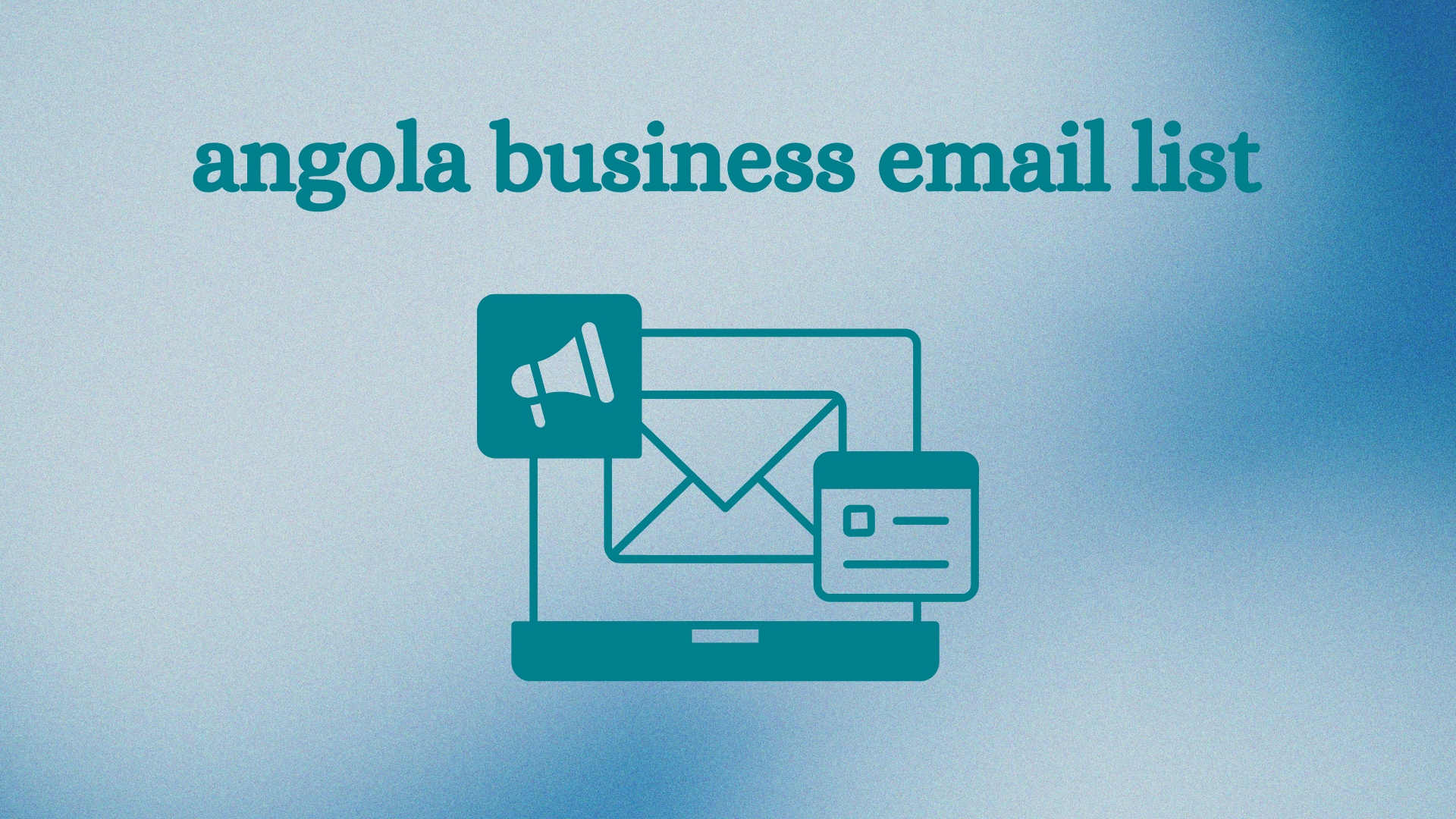Understand the Behavior of Your Target Audience
The first essential tip is to get to know your target audience in depth. Understanding your customers’ desires, needs, behaviors, and consumption habits is essential to creating campaigns that truly resonate angola business email list with them. Use data analysis tools and direct feedback to create a detailed profile of your consumer.

Market Segmentation
Don’t treat your audience as a homogeneous block. Perform market segmentation, dividing your customers into groups with similar characteristics. This allows you to personalize your campaigns and increase the effectiveness of your marketing actions.
Data-Driven Decision Making
Data-driven decision-making is a competitive advantage in today’s market. Use analytics tools to monitor and analyze the performance of your campaigns. Google Analytics, for example, can provide valuable insights into the behavior of visitors on your website, helping you adjust your strategies as needed.
KPIs and Metrics
Define key performance indicators (KPIs) that are relevant to your business. Monitoring metrics like conversion rate, cost per acquisition, and return on investment (ROI) can give you a clear picture of how effective your campaigns are and where there are opportunities for improvement.
Innovation and Creativity
Never underestimate the power of A/B testing. Experimenting with different approaches to your campaigns can reveal insights into what works best for your audience. Test variations of copy, images, calls to action, and ad formats to find the right combination.
Relevant and Engaging Content
Create content that is relevant and engaging for your audience. This involves not only creating interesting content, but also presenting it in an innovative way. Videos, infographics, e-books, and webinars are all great examples of formats that can capture your audience’s attention.
Marketing Automation
Use marketing automation tools to optimize your campaigns. Platforms like HubSpot, Marketo, and Mailchimp allow you to automate processes like sending emails, segmenting leads, and nurturing customers, saving time and increasing efficiency.
Lead Nurturing
Automation is also essential for lead nurturing. Create workflows that guide your potential customers through the buying journey, offering relevant content at each stage. This increases the chances of conversion and loyalty.
Constant Monitoring and Adjustments
The market is constantly changing, and your marketing strategy needs to keep up with these changes. Continuously evaluate your campaigns to identify what is working and what needs to be adjusted.
Customer Feedback
Value your customers’ feedback. They are the most direct source of insight into the effectiveness of your strategies. Use surveys, reviews, and social media interactions to gather valuable information and make adjustments as needed.
Alignment with Market Trends
Keep an eye on market trends and adapt your strategy as needed. This includes new technologies, changes in consumer behavior, and industry innovations. Staying up to date allows your business to stay relevant and competitive.
Incorporation of New Technologies
Don’t be afraid to incorporate new technologies into your marketing strategy. Artificial intelligence tools, chatbots, augmented reality, and other innovations can offer new ways to connect with your audience and improve the customer experience.
Focus on Customer Experience
Map the customer journey and identify critical touchpoints. Delivering a cohesive, positive experience across all touchpoints increases customer satisfaction and the likelihood of conversion.
Personalization
Invest in personalizing your campaigns. Customers value messages and offers that are relevant to their specific needs. Use behavioral and preference data to create personalized experiences.
Channel Integration
Ensure your marketing strategy is omnichannel, delivering a seamless experience across all customer touchpoints. This includes integration between physical stores, online stores, social media, and other communication channels.
Message Consistency
Maintain a consistent message across all channels. This strengthens your brand identity and creates a more cohesive customer experience.
Social Media Engagement
On social media , authentic interaction with followers is crucial. It’s not just about posting content regularly, but about genuinely engaging with your audience. Reply to comments, participate in discussions, and build a community around your brand. This approach humanizes your business and builds lasting relationships with customers.
Strategic Partnerships
Forming strategic partnerships with other businesses can expand your reach and strengthen your marketing strategy. Collaborations and co-marketing campaigns allow you to benefit from the customer base and credibility of other businesses. Choose partners who share similar values and goals to maximize results.
Influencer Marketing
Influencer marketing can be a powerful tool, as long as the influencers you choose align with your brand identity. Select influencers who have a relevant and genuine audience. Authentic influencer campaigns can significantly increase your brand’s visibility and credibility.
Corporate Social Responsibility
Incorporating corporate social responsibility into your marketing strategy can create a stronger emotional connection with your audience. Consumers are increasingly conscious and prefer brands that demonstrate a real commitment to social and environmental causes. Campaigns that highlight these efforts can improve your company’s image and attract loyal customers.
Marketing Team Training
The success of a marketing strategy also depends on the training of the team involved. Investing in training and ongoing development of marketing professionals ensures that they are up to date with the latest trends and techniques. Well-prepared teams are able to create more creative and effective campaigns, directly contributing to business growth.
Using Content Marketing
Content marketing is a powerful strategy for attracting and engaging customers. Offer educational and informative content that adds value to your audience’s lives. This can include blogs, tutorial videos, guides, and white papers. By positioning yourself as a trusted source of information, your brand gains authority in the market and builds a relationship of trust with customers, increasing the chances of conversion and loyalty.
